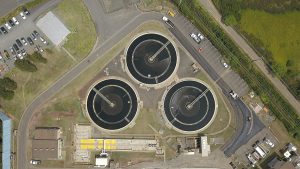
Another wastewater study… but looking at the very important question of whether infectious virus can be detected in the waste stream. Most wastewater studies to date have only looked at viral RNA. The not-too-surprising punchline is that infectious virus dies out long before the RNA signal is degraded. This kind of information we be useful for modeling risk. Abstract below:
Severe acute respiratory syndrome coronavirus 2 (SARS-CoV-2) RNA is frequently detected in the feces of infected individuals. While infectious SARS-CoV-2 has not previously been identified in wastewater, infectious SARS-CoV-2 has been isolated from the feces of at least one patient, raising concerns about the presence of infectious SARS-CoV-2 in wastewater. The fate and inactivation characteristics of SARS-CoV-2 in water and wastewater are unknown, with current inactivation estimates based on surrogate models. In this study, the persistence of SARS-CoV-2 infectivity and RNA signal was determined in water and wastewater. The times for 90% reduction (T90) of viable SARS-CoV-2 in wastewater and tap water at room temperature were 1.5 and 1.7 days, respectively. In high-starting titer (105 TCID50 mL–1) experiments, infectious virus persisted for the entire 7-day sampling time course. In wastewater at 50 and 70 °C, the observed T90 values for infectious SARS-CoV-2 were decreased to 15 and 2 min, respectively. SARS-CoV-2 RNA was found to be significantly more persistent than infectious SARS-CoV-2, indicating that the environmental detection of RNA alone does not substantiate risk of infection.